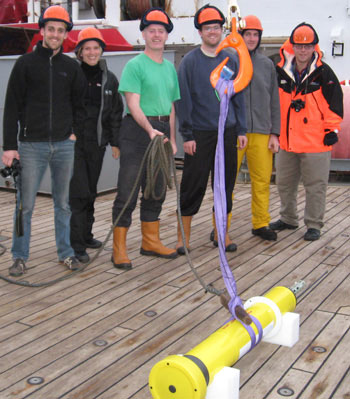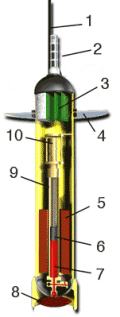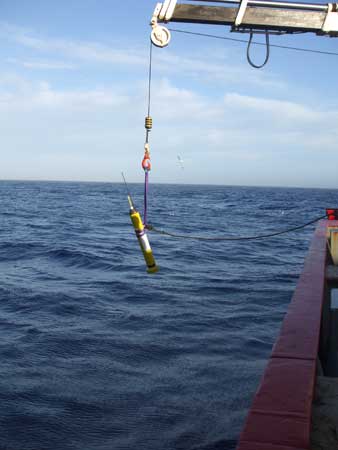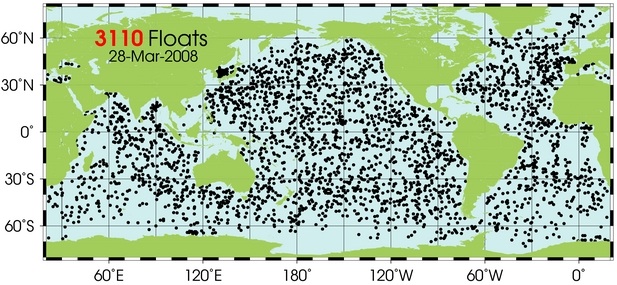Jason and the Argo Floats
In Greek mythology Jason sailed the oceans on his ship, the Argo, in search of the Golden Fleece. The men accompanying him on the quest were known as the argonauts.
In July 2001 the Jason I satellite altimeter was launched to measure variations in sea surface height, which gives information about ocean currents. [LINK TO CH.6] To accompany the Jason mission, the international ocean and climate community launched Argo - a programme to release thousands of robotic floats to measure the temperature and salinity of the global ocean from the surface to a depth of 2,000 meters.
By the time Jason II was launched in June 2008, over 3,000 Argo floats are providing data that are used to map ocean currents, describe the physical state of the oceans, and contribute to seasonal forecasting and climate prediction.
What is an Argo float?
An Argo float is about 1.1m tall, weighs about 25kg and can operate at up to 2000m depth.
In addition to the probe measuring
- temperature
- salinity
- depth
the Argo float also contains
- a microprocessor that stores the data and controls when the float sinks and rises
- a data transmission system that controls the interaction with the satellite
- and a hydraulic system that controls the buoyancy of the float via an inflatable external bladder, so the float can surface and dive.
On average Argo has one float in every 3° x 3° area of the ocean that is deeper than 2000m and not covered by ice. To maintain this array of 3000 floats, the programme needs to release about 800 new floats each year just to replace old floats that have stopped working. At present 20 countries operate Argo floats; the USA have about half of the 3000 float array.
Putting the floats in the ocean

Floats are deployed from ships doing scientfic research, from large container ships, occasionally from smaller ships and yachts, and sometimes even from aircraft. The basic floats measure temperature and salinity, and are operated by meteorological agencies, Some floats are bought by researchers who want to use the instruments to measure other properties of the ocean, such as the oxygen content of the water. Each float is checked carefully to make sure it is working properly before it is launched.



